COVID-19: The Fall And Rise Of Jobs
COVID-19 has put a lot of people out of work. In many cases states and jurisdictions have forbidden certain businesses from operating, which obviously makes it hard to stay employed if you work at that business.
In other cases businesses have laid off workers or closed simply because people have been obeying stay at home orders and stopped frequenting them. I posted about unemployment from COVID-19 back in May, and boy have things changed.
The official July unemployment numbers show the unemployment rate fell to 10.2%, from 11.1% in June. Things seem to be getting better, for now.
I found a cool new mapping site that shows this rise and subsequent fall of the unemployment rate in bi-weekly intervals at a county level for the entire United States.
The Map
The map is hosted by Sites U.S.A. and uses data from Applied Geographic Solutions. Of note, the AGS data is not the official unemployment data as recognized by the U.S. government. That data comes from the Bureau of Labor Statistics, whom I’ve posted about before. But in general the AGS data tracks very closely and their methods have shown results on par with BLS data.
Enough already, here’s the map.
Notice the chart on the left that shows the unemployment rate in 2 week intervals as well as the total number of unemployed.
Please stop believing the media when they say “40 million Americans are unemployed because of COVID-19”. Many big media outlets are still saying this and it’s a lie! They’re practicing shoddy journalism.
Yes, over 40 million American have applied for unemployment benefits since COVID-19 started, but way more than half of them are back at work. As you can see the current number of unemployed Americans is around 16.3 million, according to the official BLS numbers. That link shows the official data, so don’t let the media continue to try to deceive you.
Sixteen million people out of work is still not good, but a far cry from 40 million, which if true would be an unemployment rate of about 25%!
Get Clicky With It
Back to the map. You can click on any county and the chart on the left will adjust to show that counties respective unemployment rate throughout the time frame. It will also compare it to the general rate for the state it resides in as well as the U.S. rate as a whole.
The key to this map is the blue “play” button in the lower left. Click that button and watch the unemployment rate change in 2 week intervals from early March till present for every U.S. County. As lockdowns started easing in June and July, unemployment really started to drop across the country.
I find it especially interesting to see state borders show up so clearly. This is likely due to different state policies about which business are allowed to be open. Or it could be due to the amount of unemployment benefits provided by each state. We’ve all heard the cases of those who were collecting more from unemployment than they made at the job they lost.
Sentiment Mapping
In the upper left of the chart box on the map, if you click “unemployment data” you’ll notice that you have another option – “social sentiment”.
Here’s what the social sentiment map looks like:
They use a simple 5 level rating system with “positive” as the highest rating and “negative” as the lowest. It’s based on data from a company called Spatial.ai who gather information from social media using artificial intelligence.
As the map says it uses the “VADER (Valence Aware Dictionary and Sentiment Reasoner) sentiment model”, which is a “sort of” standard for gauging sentiment. You can read dorky papers about it if you’d like. Again, click the blue play button in the bottom left and you can watch an animation of sentiment anywhere in the country play out.
I have some problems with this analysis because it only uses social media as the input data. Let’s face it, millions and millions of people are not on social media, and the ones who are… well, don’t get me started.
Yes I’m on it, but mostly to promote my blog and graphic arts businesses. Not to bully and berate people.
Bottom line, I take this analysis with a grain of salt because it does not pull from a cohesive and inclusive sample of people across the country. But it’s still neat to look at because it’s on a map, and I love maps 🙂
I hope you find this post interesting and as always I’ll be on the lookout for cool mapping sites that show data related to money and all things financial.
* I’ll be doing some very analog outdoor adventuring this week and will get to comments as soon as I can.









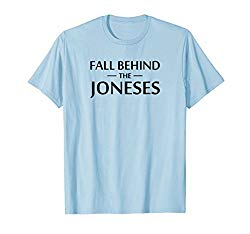
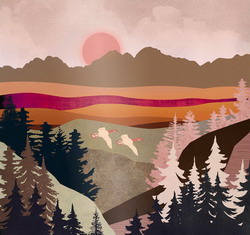




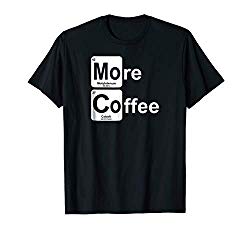


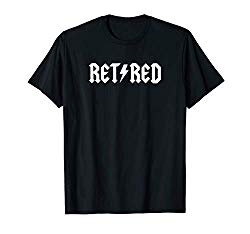

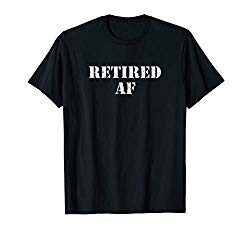



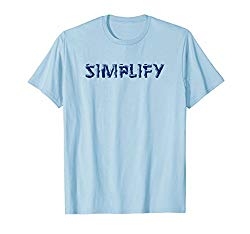




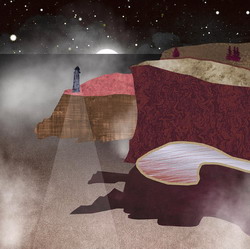

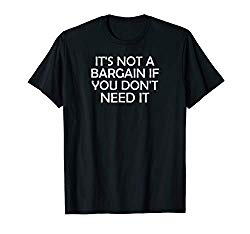

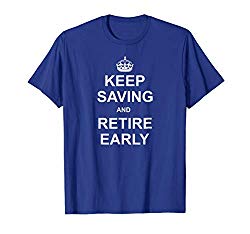










Sounds like you’re out enjoying the real life world this week just like us! Glad to hear. We’re catching some rays on a section of NC beach with loads of space to stay distant but still enjoy the outdoors. Hope you’re enjoying, too, Dave!
So far as the map: again, great data. I’ve got some info/mapping data from a GIS person we know sitting in my email waiting to be written about one of these days, think you’ll like it since it follows a similar vein as to what you’ve been writing about recently in terms of mapping data.
I was surprised that sentiment data is rather red in some areas I wouldn’t expect like PA. But, to your point, I wonder how well the sentiment data handles local dialect and language use. For example, NYC may have a more “negative” language use compared to something like the south just because of how words are used in the two different regions and what they really mean.
Glad to see unemployment is subsiding to a degree, but hopefully it doesn’t continue to be so directly correlated to infection rates.
Great point about the artificial intelligence and machine learning handling dialect and even slang. In my real job we had companies clai they were going to “wow us” with their AI algorithms etc, and every time I was underwhelmed. The technology still has so far to go.
Enjoy the beach!
Dave, despite checking headlines daily, I was surprised to read that nearly half of workers who had filed for unemployment are likely back to work already. My hunch is that the numbers are so big and unemployment is bad, so the idea gets filed away in big, bad things happening right now, without further reevaluation until feelings about it shift. Thanks for pointing out that conditions (however disheartening) may be moving in a better direction that we consciously may have absorbed.
We are moving in the right direction but like everyone I’m still concerned. Especially since the stock market seems to have a substantial cognitive dissonance.
As for the job stats, I think some media outlets purposely lie about the data for their own agenda and some are just lazy and either copy what another said or don’t investigate the difference between “40 million applied” vs how many are still unemployed. It’s sad that we can’t trust virtually any media outlets these days to be accurate and not partisan.
Good news on the falling UE rate and thanks for the new tool! Now I’m gonna go play around with this for a while on the laptop!
Another mapping rabbit hole!
Nice data. I think a lot of people are trying to work more now that the extra $600 ran out.
I think the sentiment is negative in our area. The economy feels very slow. Many restaurants moved to outdoor dining on parking spots now. But they can’t keep this up once it starts raining. Fall is going to be worse here, IMO.
Yep, fall and especially winter are going to be really taxing for everyone. Some churches here are having services in their parking lot but as you said in winter that will be way more difficult. It sucks.
nice maps as always. hope you’re enjoying the adventuring. i have a family friend who’s kids got that enhanced unemployment from little part time jobs. the friend did the right thing and didn’t let them just squander it but consulted with me on how to get started investing it! smart move if you ask me.
I’m back! Yes smart move indeed – go to uncle Freddy, he’s got the money stuff licked!
Thanks for the map Dave! This paints a much clearer picture on unemployment than what the news media reports. If we consider that 5% unemployment is roughly “normal”, then it appears many states have recovered or nearly recovered economically from the pandemic.
Yep, the real official data is always out there, you just have to get it and these folks did the extra by mapping it. I saw another outlet just yesterday make the same lying claim that “40 million americans are unemployed”… some of these media outlets have an agenda for sure
Interesting data for sure. Seems that the unemployment rate has slowly recovered, which is nice to see.
I would assume it’s recovering in your country as well, or it should be. But who knows what the future holds, that’s what sucks.
Did your data take into account for what that return to work looks like? I am on the executive for our local business association and what we are seeing in our town, as with many places I have traveled this month and even at my own business is this. Sure people are back to work but many of them at a tiny fraction of what they were working before. Businesses aren’t the same, work isn’t the same and thus income isnt the same. Unemployment rates wether rising or falling are a barometer but never catch the full picture. This is why I am very happy our government with the CERB allows people to make a small income in the new smaller work reality without jeopardizing their government basic income.
The data that map the map up are the official US government data which account for unemployment filings. So if someone’s still working but from home then they should not have filed for unemployment. Some states do allow for partial unemployment, meaning if your company cut you back to 32 hours a week you can file for the lost 8 hours of pay. To be honest I’m not sure how the official data handle that, I assume they still count as employed because factually in that case you are. I agree that the unemployment rate doesn’t capture a full metric of economic health for sure, but no one thing does. Look at our stock market, it’s smoking some serious crack (joking about your previous comment 🙂
Dave,
I played with the graph for my geography and it brings a hint of optimism. However, I’m balancing it with my local market knowledge. Stopped by a restaurant at lunch today to pick up my business lunches for clients and found out they were at 30% capacity still. When I asked if employee reductions were impacted heavily and the replied was “not really”. This appears to mirror the data on your graph. However, how do employers sustain nearly full employment staff when businesses have drastic demand reductions? And, for how long can they sustain this practice?
Those are really good questions. Frankly I don’t know how many restaurants are doing it, it seems like the numbers just shouldn’t add up. Then again I don’t run a restaurant so I’m a bit outta my league in that assessment. Overall it’s great to see the recovery continue but I hope it’s not a temporary thing
Love this post… especially the part about not listening to social media…I have the same problem with the medical aspect of social media..all the hype and fear of media regarding the positive cases and the deaths of Covid are driving me crazy. I am on the front lines taking care of Covid patients and the general public doesn’t know the true story and when you try to tell them they yell at you call you names and try to shame you..love your maps…thanks for the article.
Wow, THANKS for what you do Tracy! And just ignore the social media bullies, they lead miserable lives and want to make everyone else miserable with them. Don’t let them win, keep doing what you do!
A recession in the economy is certainly a driver of technological and organizational change. The current situation will push companies from various industries to rethink the role of AI in business development, which will lead to an increase in the number of new projects in this direction.
Your absolutely right about the unethical media talking about the numbers of people being out of work! Respected journalism is very rare these days. I love this post also. Great job.
So true… I think they’re mostly lying out of laziness and incompetence but some of it is probably intentional with an agenda.
Not surprised that there’s a lot of “red” negative sentiment here in PA. The governor’s shut down policies have been largely unpopular since March. Also, I know family members in manufacturing who had a week of furlough during each spring month and filed unemployment for each of those 3 weeks. They would have counted as “unemployed” but were only taking temporary 1 week “unemployment” stints each month. Thankfully, all are back to full time work. Great article. Thanks.
My brother was out of work for one week as well and filed unemployment for that week. It took him months to get his check.
Thanks for the comment Trish!